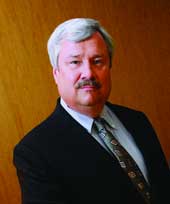Get me to the station on time

Washington-area modernization brings new processes along with new technologies.
About three years ago, with many of its information technology systems nearly 20 years old, the Washington area's transit authority struggled with maintenance and integration issues. The situation was exacerbated because the authority had installed about 80 systems in various departments over the years. Some of them were developed internally; others were simply aging beyond usefulness."We actually used eBay on occasion to find and buy old hardware," said Rod Burfield, the Washington Metropolitan Area Transit Authority's recently retired chief information officer.Frustrated with the older systems, WMATA set out to modernize the IT. WMATA brought in Booz Allen Hamilton Inc. as the systems integrator on the upgrade, which evolved into a full-scale transformation that touched nearly every person, process and piece of technology at the authority.During the course of about three years, Booz Allen helped the transit authority migrate from its 80 systems to three commercial solutions. The modernization plan was bold, but WMATA could not have continued much longer with the hodge-podge of older systems."The transit authority was facing growth in business and more complexity in their business," said Douglas Carter, a Booz Allen vice president. "They had increased ridership, increased services and an increased interest in making the organization transparent and accurate in its financial reporting."Millions of tourists use the system's trains and buses, in addition to hundreds of thousands of daily commuters. It is the second-largest commuter rail system in the United States.Before the modernization, the 80 systems that performed administrative functions within the authority couldn't communicate with one another. They handled necessary functions ? including timekeeping, financial reporting and capital project management ? separately.As the transit system grew larger and more complex, managers began searching for a way to gather more information and better control the business. Internally, transit authority officials found a number of commercial products that met their needs to become more efficient and effective."The older systems are stand-alone applications and were not designed to easily integrate with other systems," Burfield said. "This required a very high level of IT staff support to pull information from disparate applications."Booz Allen set out to implement new software to replace Cobol programs and internally developed software. The old systems were functioning below the level WMATA needed."Managers wanted finer granularity in things like financial and performance reports," Carter said. "They had invested a lot in rail systems, stations and vehicles, but they had not invested a lot in technology so their managers could manage better."The authority now uses PeopleSoft software for financials, budgeting, procurement and human resources. Software from Trapeze Software Group Inc. handles scheduling buses and trains in addition to other functions. And the authority picked a solution from Maximo maintenance and material management solution from MRO Software(IBM).The upgrade affected virtually every employee at the transit authority, so the transition was not easy. WMATA had to show people the advantages of using commercial products.Burfield recommends that other organizations considering the move to a commercial system first take a close look at how the organization is running."Legacy systems by themselves are not necessarily a bad thing," he said. "If they do the job for which they are intended, and parts and information are still available, you can probably delay modernization and just upgrade the system when required."However, many older systems cannot easily be modified to offer the flexibility, productivity and cost savings of modern systems.Burfield compares it to switching from paper checks to electronic bill payment systems on the Internet. Mailing checks gets the task done, but online bill payment offers advantages that are impossible with the old method.Burfield said to expect some turmoil when turning off a system everybody knows and replacing it with an unfamiliar one. Systems integrators and organizations should not underestimate the upheaval it can cause.With the new systems in place, WMATA is already reaping benefits. The number of payroll errors requiring manual correction was reduced by 95 percent. More than half of the human resources and benefits work is now automated. And budgeting is fully automated.Most important, WMATA officials can enter their budget information and track expenditures against the budget, Burfield said.

Staff writer Doug Beizer can be reached at dbeizer@1105govinfo.com.

Douglas Carter of Booz Allen Hamilton Inc., said "The transit authority was facing growth in business and more complexity in their business."
Rick Steele
Staff writer Doug Beizer can be reached at dbeizer@1105govinfo.com.
NEXT STORY: The power of 3

